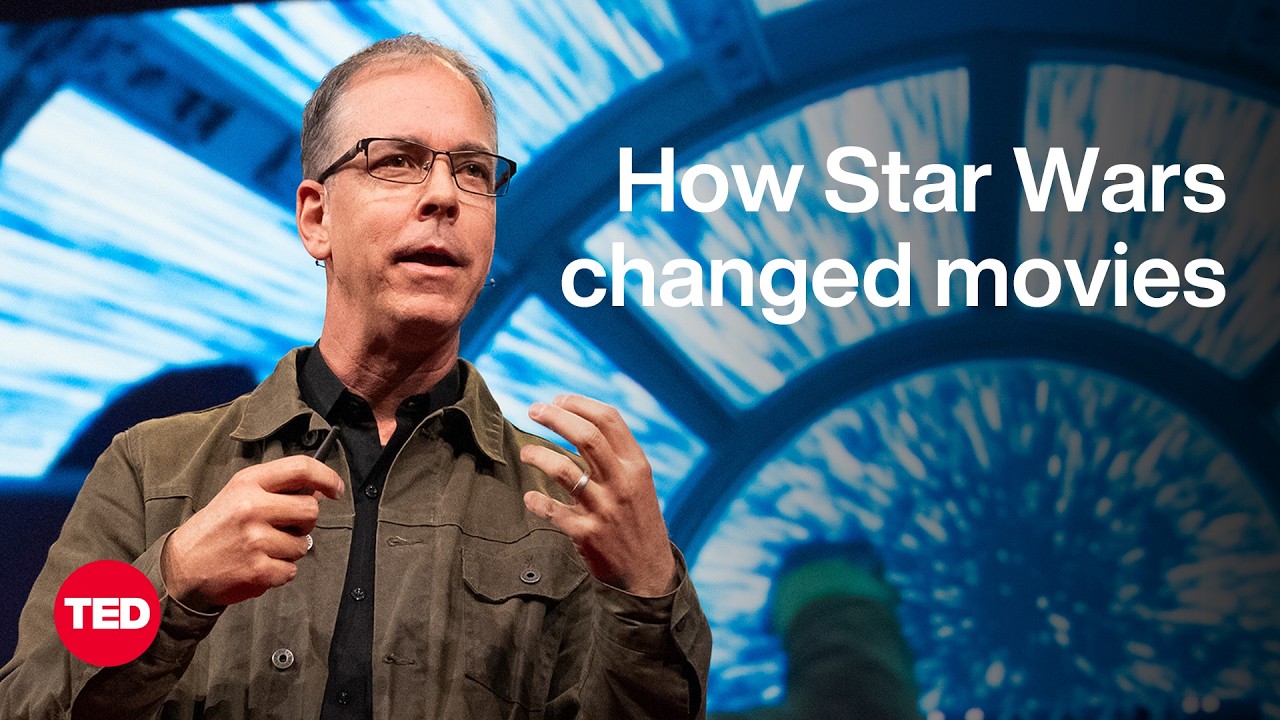The speaker highlights how technological innovations in visual effects, from the original Star Wars to modern AI tools, have historically enhanced artistic creativity rather than replacing it, emphasizing collaboration between artists and technology. He advocates for responsible use of AI as a creative partner to push the boundaries of storytelling, ensuring that future advancements empower artists and uphold ethical standards.
The speaker begins by highlighting the groundbreaking visual effects of the original Star Wars Episode IV, emphasizing how innovative camera rigs like the Dystralex revolutionized filmmaking by enabling dynamic model shots. He contrasts this with today’s emerging AI technologies, which are rapidly advancing in image and video generation. While headlines often focus on AI threatening jobs, the speaker reassures that these tools are still in development and that the true power lies in how artists and engineers can collaborate to push creative boundaries.
He then reflects on the history of ILM and George Lucas’s vision of artist-driven innovation over the past 50 years. Using Jurassic Park as a case study, he explains how new computer graphics techniques were blended with traditional methods like stop-motion animation, creating a seamless integration of old and new technologies. This approach of combining craftsmanship with innovation has been a recurring theme, demonstrating that technological progress enhances rather than replaces artistic skill.
The speaker discusses recent advancements in virtual production, such as real-time LED walls used in The Mandalorian, which allow filmmakers to create immersive environments on set. He illustrates how these innovations enable more efficient and creative storytelling, with examples from projects like Solo and Rogue One, where digital effects and practical techniques are combined to produce stunning visuals. These developments exemplify the ongoing collaboration between technology and artistry, elevating the storytelling process.
He introduces a new short film created by an artist using the latest AI tools, showcasing how AI can serve as a creative partner rather than a threat. This project, developed in just two weeks, explores what a probe droid might see on a new Star Wars planet, emphasizing that AI tools are extensions of human imagination. The speaker stresses the importance of diverse skills and collaboration in filmmaking, highlighting that the future of visual effects depends on artists leveraging these tools responsibly and creatively.
In conclusion, the speaker advocates for artist-driven innovation, emphasizing that the next wave of technological advancements should empower artists rather than replace them. He underscores the importance of ethical considerations, such as obtaining permission for likeness use, and envisions a future where AI and other tools enable even more imaginative and spectacular storytelling. By maintaining a focus on creativity and collaboration, he believes the industry can continue to produce groundbreaking visual effects that inspire audiences worldwide.
